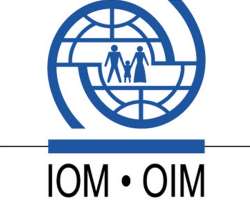Number of Displaced People Declining in Bangui

GENEVA, Switzerland, September 26, 2014/African Press Organization (APO)/ -- The number of displaced people in the Central African Republic (CAR) capital Bangui is declining and sites are closing as more and more people are returning home, according to the recent IOM Displacement Tracking Matrix (DTM) survey. The families remaining in camps are the poorest and most vulnerable. As their living conditions remain difficult, they need the targeted support of the humanitarian community to be able to return home or relocate.
The DTM is a tool developed by IOM to account for the situation and needs of displaced populations in many countries of the world. The information gathered by the DTM is shared with the authorities as well as with the humanitarian community to allow efficient and timely delivery of relief.
In December 2013 Bangui saw significant displacement with 300,000 people displaced in 46 sites by the end of January 2014. As of the end of August, 67,514 displaced people remain in 37 sites in Bangui.
Most of the people that are still in sites have spent over 8 months living in tents and in poor health and sanitary conditions; the rate at which displacement is decreasing in the capital has significantly lowered since June despite the rainy season. Ninety-one per cent of those interviewed said they intend to leave their site within the next month. The majority of them (77 per cent) said they will go back to their place of origin while others (14 per cent) would prefer to be relocated. Damaged or destroyed houses, lack of financial resources and uncertainty about the political and security situation are the main reasons raised by the displaced people for not having left the sites yet.
“Now that the security situation in the capital is improving, we need to support the 61 per cent of house owners and the 29 per cent of renters still in camps who are willing and able to return, to rehabilitate their houses or find a new place to rent in order to go back to their neighborhoods and restart a normal life,”said Giovanni Cassani, IOM Regional Emergency Specialist.
Living on camp sites has become more and more difficult as the rainy season has furthermore worsened living conditions with leaking shelters and muddy grounds.
Lack of livelihood opportunities is also a great cause of distress. Between May and June a big shift in survival mechanisms has been observed among the displaced population. Tools and belongings sold by displaced people to buy food are rapidly depleting. The majority now reduces the number of meals per day; adults reduce their food consumption to feed children. Adults have reported spending entire days without eating.
“We are working very closely with local and national authorities to have different communities talk to each other and work with each other. We see positive signs every day. This will be the way for a durable and sustainable return home,” said Cassani.
